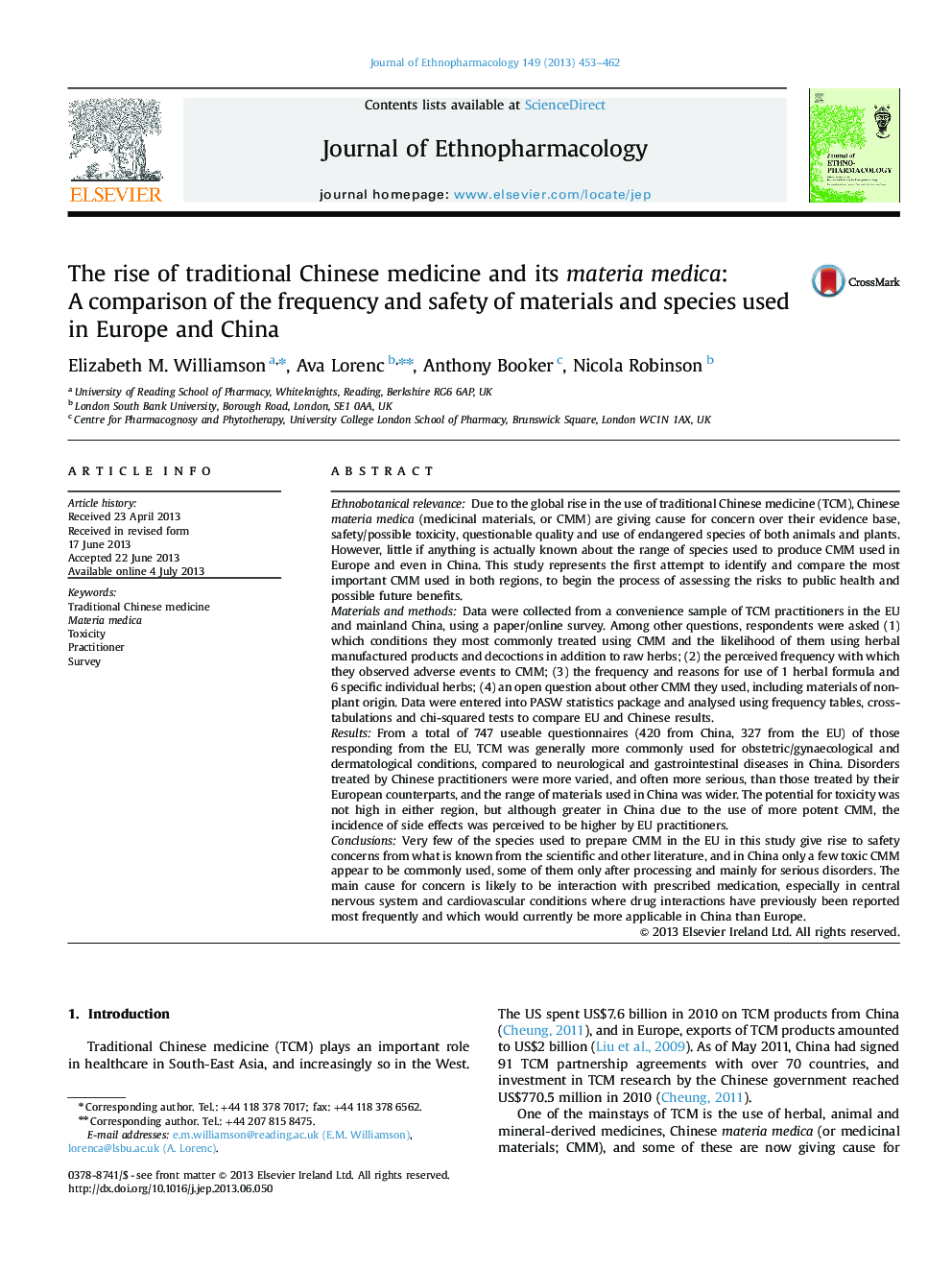| کد مقاله | کد نشریه | سال انتشار | مقاله انگلیسی | نسخه تمام متن |
|---|---|---|---|---|
| 5837202 | 1123961 | 2013 | 10 صفحه PDF | دانلود رایگان |

Ethnobotanical relevanceDue to the global rise in the use of traditional Chinese medicine (TCM), Chinese materia medica (medicinal materials, or CMM) are giving cause for concern over their evidence base, safety/possible toxicity, questionable quality and use of endangered species of both animals and plants. However, little if anything is actually known about the range of species used to produce CMM used in Europe and even in China. This study represents the first attempt to identify and compare the most important CMM used in both regions, to begin the process of assessing the risks to public health and possible future benefits.Materials and methodsData were collected from a convenience sample of TCM practitioners in the EU and mainland China, using a paper/online survey. Among other questions, respondents were asked (1) which conditions they most commonly treated using CMM and the likelihood of them using herbal manufactured products and decoctions in addition to raw herbs; (2) the perceived frequency with which they observed adverse events to CMM; (3) the frequency and reasons for use of 1 herbal formula and 6 specific individual herbs; (4) an open question about other CMM they used, including materials of non-plant origin. Data were entered into PASW statistics package and analysed using frequency tables, cross-tabulations and chi-squared tests to compare EU and Chinese results.ResultsFrom a total of 747 useable questionnaires (420 from China, 327 from the EU) of those responding from the EU, TCM was generally more commonly used for obstetric/gynaecological and dermatological conditions, compared to neurological and gastrointestinal diseases in China. Disorders treated by Chinese practitioners were more varied, and often more serious, than those treated by their European counterparts, and the range of materials used in China was wider. The potential for toxicity was not high in either region, but although greater in China due to the use of more potent CMM, the incidence of side effects was perceived to be higher by EU practitioners.ConclusionsVery few of the species used to prepare CMM in the EU in this study give rise to safety concerns from what is known from the scientific and other literature, and in China only a few toxic CMM appear to be commonly used, some of them only after processing and mainly for serious disorders. The main cause for concern is likely to be interaction with prescribed medication, especially in central nervous system and cardiovascular conditions where drug interactions have previously been reported most frequently and which would currently be more applicable in China than Europe.
311
Journal: Journal of Ethnopharmacology - Volume 149, Issue 2, 16 September 2013, Pages 453-462